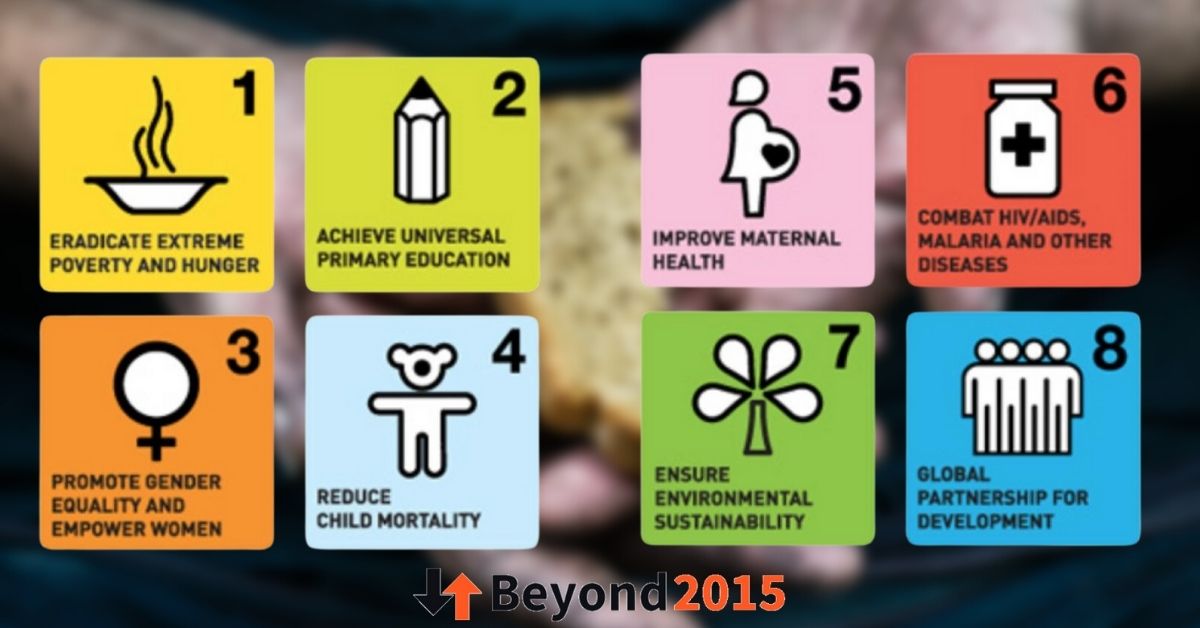Millennium Development Goals (MDGs)

The United Nations (UN) conceived and agreed upon the millennium development goals in the year 2000 at the Millennium Summit after the United Nations Millennium Declaration.
The primary purpose of the MDGs was to organize a systemic effort to resolve global issues such as poverty, starvation, unsanitary living conditions, etc.
We recommend not missing out on the sustainable development goals either.
8 Millennium Development Goals (MDGs)
Approximately 191 UN member states and 22 international organizations agreed upon the 8 Millennium Development Goals (MDGs), which are expanded upon below.
1. Ensuring Global Primary Education
This MDG focuses on building a stable worldwide educational infrastructure that will provide a full-fledged course of primary schooling to boys and girls.
2. Eliminating Extreme Poverty and Hunger
The UN set three main targets to achieve this goal. Simply put, the three objectives are:
- Lowering the number of people who live on less than 1.25 USD a day by the span of 1990-2015.
- Providing sustainable and stable work opportunities for everyone, including women and young people.
- Halving the number of starving people and providing adequate food for all by 2015.
3. Empowering Women and Eradicating Gender Inequality
The main objective of this MDG is to level out the gender gaps in all levels of education.
4. Lowering Child Mortality
Statistics show that children under five years of age from rural areas are 1.7 times more likely to lose their lives than the youth in urban areas. Thus, the UN established this MDG which aims to reduce the worldwide mortality rate of children under five years of age by two-thirds. The timeline set for this is between 1990-2015.
5. Improving Maternity Health
The UN set 2 specific targets for ensuring proper maternal health worldwide. These targets are:
- Providing more accessible resources to skilled health personnel worldwide with an intention to plummet the maternal mortality ratio by two-thirds.
- Ensuring proper access to medication and supplements for pregnant mothers worldwide by 2015.
6. Combatting Malaria, AIDS/HIV, and Other Major Diseases
The three targets set by the UN to achieve this MDG include:
- To stop the spread of HIV/AIDS by 2015 and progress towards reversing its spread.
- To make proper HIV treatment and care accessible for infected people worldwide by 2010.
- To stop and reverse the spread of malaria, tuberculosis, and other major diseases by 2015.
7. Achieving Environmental Stability
The three targets set by the UN to achieve this MDG include:
- Integrating rules for environmental sustainability within varying country policies. Additionally, stopping environmental degradation and regulating the exploitation of ecological resources.
- Lowering the rate of biodiversity loss significantly by 2010.
- Halving the number of people who don’t have access to clean drinking water and proper sanitation.
8. Building Global Partnerships for Development
The main areas of focus for this MDG are:
- Changing the global economy by developing a more inclusive, transparent, and non-discriminatory financial system.
- Supporting the special needs and dealing with the debts of the underdeveloped countries, landlocked countries, and developing small island states that lack proper infrastructure.
- Partner with pharmaceutical companies and provide better access to essential medicines in developing countries.
- Partner with information companies and provide access to better communication technologies in developing countries.
Conclusion
Sustainable investing is an excellent alternative to traditional investing as it’s a tangible way to support these goals. To sum it up, this can be done through buying assets of businesses and companies that share the same goals as the MDGs.


 Português
Português  Indonesia
Indonesia  Thai
Thai  Tiếng Việt
Tiếng Việt  Italiano
Italiano  Français
Français  Deutsch
Deutsch 